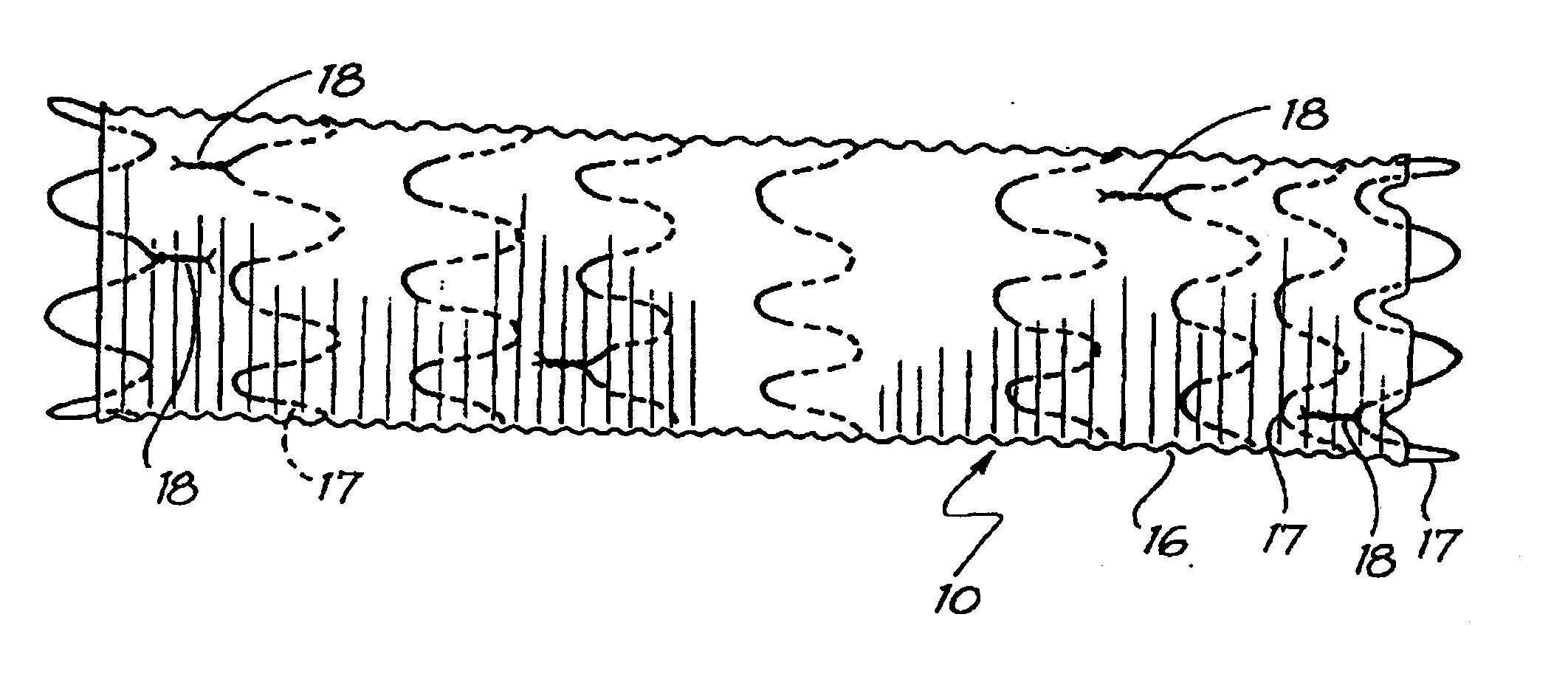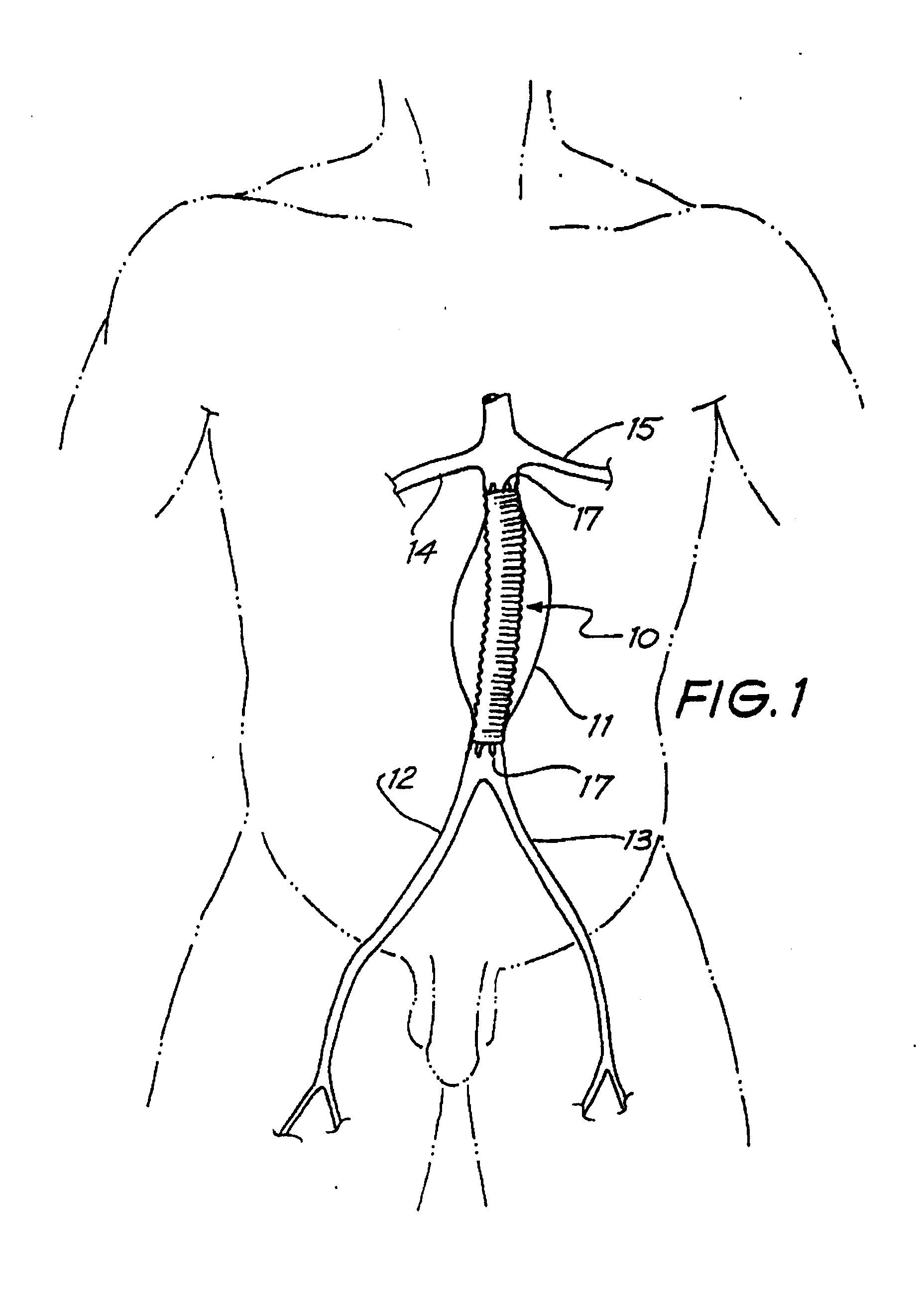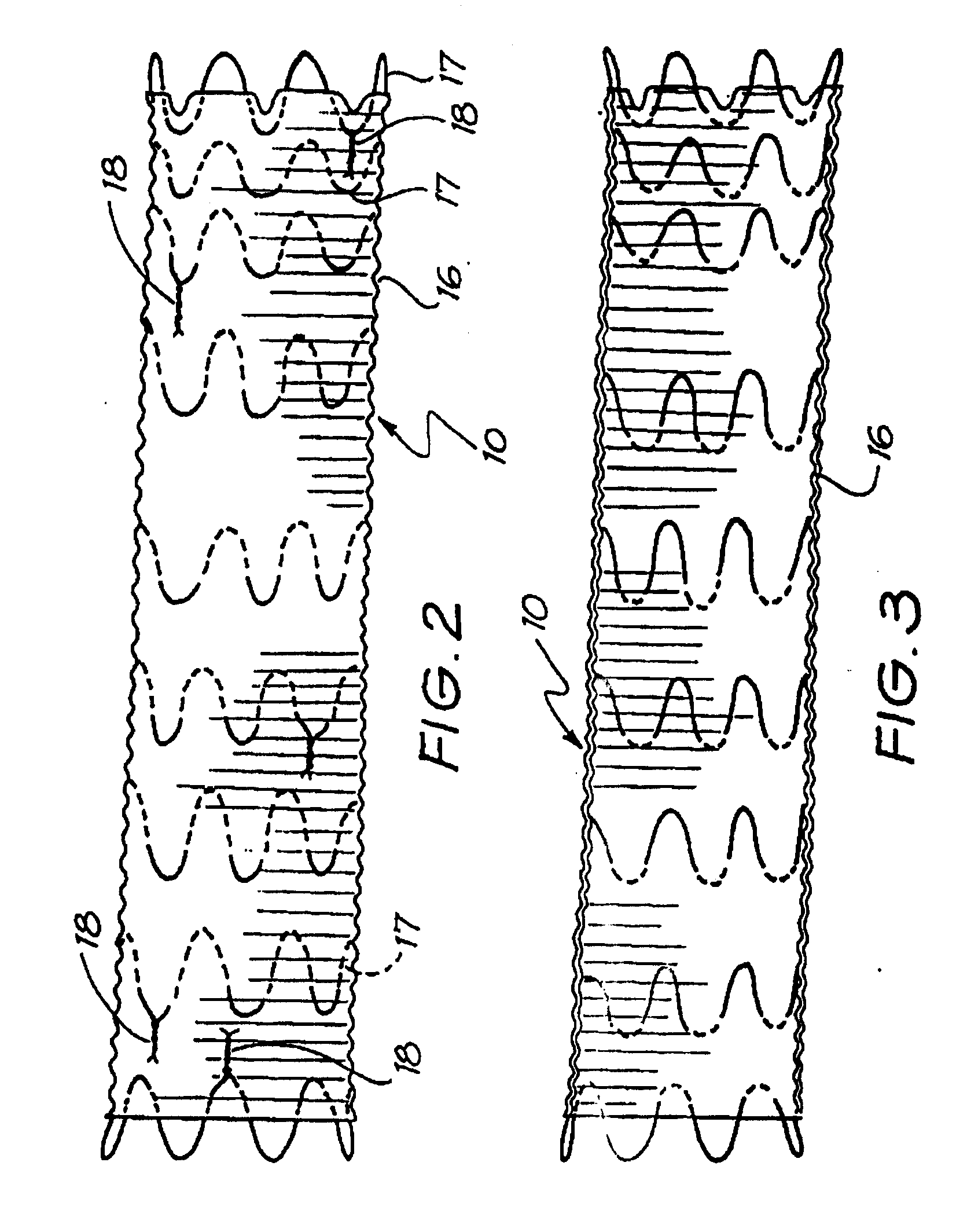Intraluminal Graft
a technology of intraluminal graft and graft, which is applied in the field of intraluminal graft, can solve the problems of lack of precise control and occlusion of the lumen, and achieve the effect of maximising the number of wires
- Summary
- Abstract
- Description
- Claims
- Application Information
AI Technical Summary
Benefits of technology
Problems solved by technology
Method used
Image
Examples
Embodiment Construction
[0028] The intraluminal graft 10 is adapted for insertion transfemorally into a patient to achieve bridging and occlusion of the aneurysm present in the aorta. As is seen in FIG. 1 the aorta 11 is connected to the left and right femoral arteries 12 and 13. The aortic aneurysm is located between the renal arteries 14 and 15 and the junctions of the femoral arteries 12 and 13 with the aorta 11. The graft 10 is, as will be described subsequently in more detail, inserted inside a catheter introduced into one of the femoral arteries 12 or 13 in a leg of the patient. Once the catheter is located appropriately with its proximal end in the aorta 11 the graft 10 is ejected from the catheter and expanded so that each end is in intimate contact around its full periphery with the aorta 11. The graft 10 then bridges the aneurysm and isolates any thrombosis or gelatinuous material associated with the aneurysm outside the graft 10 to reduce the risk of embolisation.
[0029] The intraluminal graft 1...
PUM
 Login to View More
Login to View More Abstract
Description
Claims
Application Information
 Login to View More
Login to View More - R&D
- Intellectual Property
- Life Sciences
- Materials
- Tech Scout
- Unparalleled Data Quality
- Higher Quality Content
- 60% Fewer Hallucinations
Browse by: Latest US Patents, China's latest patents, Technical Efficacy Thesaurus, Application Domain, Technology Topic, Popular Technical Reports.
© 2025 PatSnap. All rights reserved.Legal|Privacy policy|Modern Slavery Act Transparency Statement|Sitemap|About US| Contact US: help@patsnap.com



